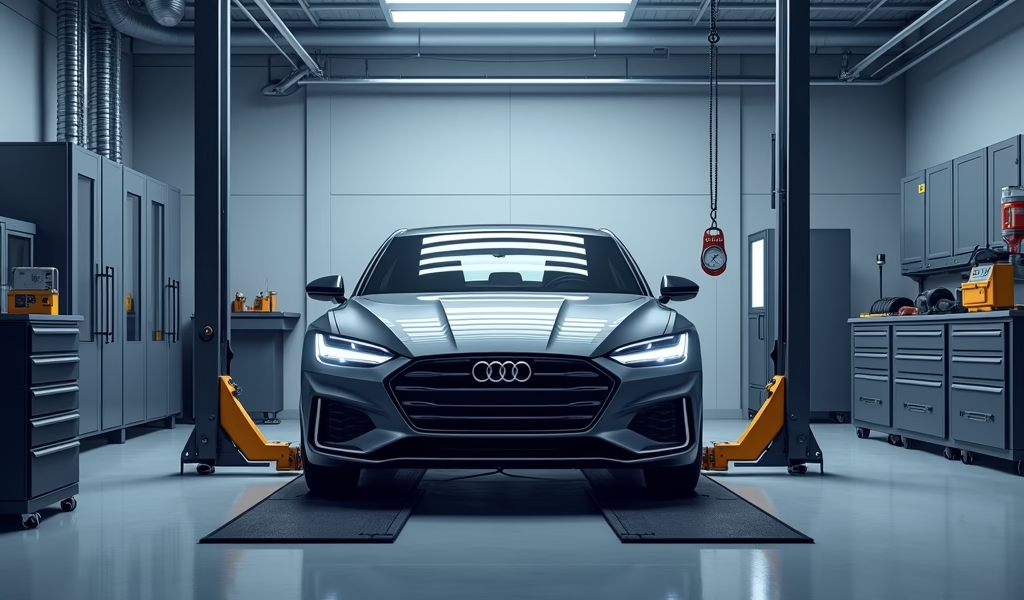Overview
This article emphasizes the importance of five key maintenance areas (fluid changes, tire care, brake system, electrical system, and following manufacturer schedules) to protect and maximize the value of vehicles purchased with 0% financing deals. Proper maintenance not only prevents costly repairs and preserves warranty coverage but also significantly enhances resale value, effectively protecting the financial advantage gained through zero-interest financing.
Table of Contents
- Why Maintenance Matters for Your 0% Finance Car
- 1. Regular Oil Changes and Fluid Checks: The Engine’s Lifeline
- 2. Tire Care and Rotation: Four Points of Truth
- 3. Brake System Maintenance: Safety You Can Feel
- 4. Battery and Electrical System Care: Preventing the Morning No-Start
- 5. Following Manufacturer Service Schedules: Your Vehicle’s Roadmap
- The Real Economics of Vehicle Maintenance
- Your Maintenance Action Plan
- Frequently Asked Questions
Why Maintenance Matters for Your 0% Finance Car
That intoxicating new car smell, the flawless paint, and the financial relief of a 0% interest car deal – it’s a combination that’s hard to beat. But as someone who’s spent 25 years under the hood, I can tell you that your smart financial decision doesn’t end at the dealership. The real value of that zero-interest financing depends heavily on how you treat your investment in the years ahead.
I’ve witnessed countless vehicles roll into my shop with preventable issues that not only cost owners thousands in repairs but also significantly diminish resale values. When you’ve secured a 0% finance deal, neglecting maintenance essentially throws away the financial advantage you worked hard to secure.
Think about it this way – that zero-interest financing might have saved you $3,000 over the life of your loan. Proper maintenance protects that savings while potentially adding thousands more through extended vehicle life and stronger resale value.
Let’s dive into the five maintenance essentials that will protect your investment and ensure your vehicle delivers reliable service throughout your ownership – and maybe even beyond your final payment.
1. Regular Oil Changes and Fluid Checks: The Engine’s Lifeline
I’ve rebuilt hundreds of engines in my career, and I can tell you with absolute certainty: your engine’s oil is its lifeblood. It lubricates moving parts, removes heat, and carries away contaminants. Despite all our technological advancements, regular oil changes remain the fundamental building block of vehicle maintenance.
Modern vehicles typically recommend oil changes every 5,000 to 10,000 miles. But here’s what the owner’s manual doesn’t emphasize enough: that interval assumes “normal” driving conditions. Most of us actually operate under what manufacturers classify as “severe” conditions – stop-and-go traffic, extreme temperatures, short trips, or towing. These conditions accelerate oil breakdown and may require more frequent changes.
Beyond engine oil, your vehicle relies on several specialized fluids:
- Transmission fluid transfers power from the engine to the wheels
- Brake fluid enables stopping through hydraulic pressure
- Coolant regulates temperature and prevents freezing or overheating
- Power steering fluid makes turning the wheel manageable
When I inspect a vehicle with 100,000+ miles that’s running like new, I can almost guarantee the owner has been religious about fluid maintenance. Conversely, when I see a 60,000-mile vehicle with major issues, fluid neglect is often the culprit.
Perhaps most importantly for your 0% finance vehicle, documented fluid maintenance protects your warranty. According to the Federal Trade Commission, manufacturers can deny warranty claims if they determine neglected maintenance contributed to a failure. When you’ve secured that fantastic financing deal, preserving warranty coverage becomes even more essential.

2. Tire Care and Rotation: Four Points of Truth
Your tires represent the only contact points between your vehicle and the road, yet they’re often overlooked until problems arise. Think of them as your car’s shoes – they need proper care, regular rotation, and occasional replacement to function properly.
Maintaining proper tire pressure is the simplest yet most effective tire care practice. I recommend checking pressure monthly and before long trips. The correct pressure isn’t found on the tire itself but rather on the driver’s door jamb sticker or in your owner’s manual.
Underinflated tires can reduce fuel economy by up to 3% while accelerating wear patterns that compromise handling. Meanwhile, overinflated tires reduce contact patches, potentially affecting braking performance and creating a harsh ride.
Regular rotation helps tires wear evenly, extending their lifespan by thousands of miles. Most manufacturers recommend rotation every 5,000-7,500 miles. This simple service costs far less than premature tire replacement.
Be vigilant for these warning signs indicating tire replacement is needed:
- Tread depth below 4/32 inch (easily checked with a quarter)
- Uneven wear patterns across the tire surface
- Visible cracks, bulges, or damage to sidewalls
- Excessive vibration while driving
Fresh, properly maintained tires improve fuel economy by up to 3%, enhance safety in emergency maneuvers, and provide better traction in adverse weather. For vehicles purchased with 0% APR car deals, maximizing tire life represents another way to protect your smart financial decision.
3. Brake System Maintenance: Safety You Can Feel
After 25 years in the industry, I’ve learned that brakes tell the truth about a vehicle owner. Those who wait for the metal-on-metal grinding before seeking service often display the same reactive approach to other maintenance areas.
Your brake system converts kinetic energy into heat through friction. This process naturally wears components over time. Most vehicles display these warning signs when brake service is needed:
- Squealing or grinding noises when braking
- Vibration or pulsation in the brake pedal
- Vehicle pulling to one side during braking
- Brake pedal feeling spongy or requiring more pressure
Typical brake pad lifespans range from 30,000 to 70,000 miles, influenced by driving habits, vehicle weight, and pad material. However, rotors, calipers, and brake fluid also require attention.
Brake fluid is particularly vulnerable to moisture absorption, which lowers its boiling point and compromises braking performance. Most manufacturers recommend replacing brake fluid every 2-3 years, regardless of mileage. Many 0% finance deals include some scheduled maintenance, but brake fluid replacement is often overlooked in these packages.
The financial case for preventative brake maintenance is compelling. A typical brake pad replacement might cost $150-$300 per axle, while waiting until metal-on-metal contact occurs can add rotor replacement ($200-$400) and potentially caliper repairs ($300-$800). For a vehicle under a 0 percent financing for 72 months agreement, those unnecessary additional costs directly undermine your financial advantage.
4. Battery and Electrical System Care: Preventing the Morning No-Start
Modern vehicles have evolved into rolling computers with dozens of electronic control units managing everything from engine timing to cabin comfort. This complexity makes your battery and electrical system more critical than ever.
The average car battery lasts 3-5 years, though extreme temperatures can significantly shorten this lifespan. I advise my customers to be alert for these warning signs:
- Engine cranks slowly when starting
- Headlights dimming, especially at idle
- Electronic systems behaving erratically
- Battery warning light illuminated
- Battery case appears swollen or misshapen
Simple maintenance can extend battery life significantly. Keep terminals clean and free of corrosion (a mixture of baking soda and water works wonderfully), ensure connections are tight, and consider a trickle charger for vehicles used infrequently.
Beyond the battery itself, your vehicle’s alternator and charging system deserve attention. A failing alternator can leave you stranded just as quickly as a dead battery. Most auto parts stores offer free charging system checks that can identify potential issues early.
According to AAA, battery-related issues are among the top reasons for roadside assistance calls. For a vehicle under a 0% finance agreement, a proactive approach to electrical system maintenance prevents both inconvenience and potentially costly electronic component repairs.

5. Following Manufacturer Service Schedules: Your Vehicle’s Roadmap
Your vehicle’s manufacturer invested millions in engineering and testing to develop optimal maintenance schedules. These aren’t suggestions – they’re carefully calculated intervals designed to maximize performance and minimize long-term costs.
Major service milestones typically occur at 30,000, 60,000, and 90,000 miles, often including:
- Comprehensive inspection of major systems
- Replacement of various filters (air, fuel, cabin)
- Timing belt replacement (if equipped)
- Spark plug replacement
- Transmission service
While these services represent a more significant investment than routine maintenance, they pale in comparison to the cost of major component failure. A timing belt replacement might cost $500-$1,000, but a failed timing belt can cause catastrophic engine damage exceeding $3,000-$5,000.
For vehicles purchased with 0% financing, following the manufacturer’s maintenance schedule is doubly important. Beyond preventing costly repairs, documented adherence to recommended service intervals protects your warranty coverage and preserves resale value – essential considerations when you eventually sell or trade your vehicle.
The Consumer Reports annual auto survey consistently shows that vehicles maintained according to schedule experience fewer problems and retain higher values than those with sporadic care.
The Real Economics of Vehicle Maintenance
When you’ve secured a 0% financing deal, you’ve already demonstrated financial savvy. Extending that same approach to vehicle maintenance simply makes good economic sense. Let me break down the dollars and cents:
A typical maintenance schedule over 5 years might cost approximately $3,000-$4,000, depending on your vehicle. That includes oil changes, tire rotations, brake service, and manufacturer-recommended milestone services.
Meanwhile, neglected vehicles frequently require major repairs that easily exceed that amount in a single service. I’ve seen timing chains ($1,500+), transmissions ($3,500+), and engine replacements ($5,000+) that were directly attributable to maintenance neglect.
Beyond repair costs, properly maintained vehicles typically return 10-15% higher resale values. On a $25,000 vehicle, that’s $2,500-$3,750 in preserved value – roughly equivalent to the maintenance investment itself.
The maintenance advantage becomes even clearer when we consider the total cost of ownership. Your 0% financing saved you thousands in interest, but proper maintenance protects that advantage while potentially adding thousands more in preserved value and avoided repairs.
Your Maintenance Action Plan
Ready to protect your investment? Start with these five steps:
- Create a maintenance calendar based on your owner’s manual recommendations
- Find a trustworthy service provider who specializes in your vehicle make
- Keep detailed records of all maintenance performed
- Address minor issues promptly before they become major problems
- Budget for maintenance as a regular expense, not an unexpected burden
Digital maintenance tracking apps make following service schedules easier than ever. Many offer reminders based on both time and mileage intervals, ensuring you never miss critical maintenance. Some newer vehicles even include built-in maintenance trackers that alert you when service is due.
The best approach combines manufacturer recommendations with regular visual inspections. Check fluid levels monthly, inspect tires for wear patterns, and listen for unusual noises. Your senses are powerful diagnostic tools that can catch problems early.
Remember, that zero-percent financing deal you secured was just the beginning of your vehicle’s financial story. How that story unfolds depends largely on the care you provide in the years ahead. With proper maintenance, your vehicle can deliver reliable service long after the loan is paid off – representing the true value of your initial investment.
Frequently Asked Questions
Does maintaining my car affect my 0% finance agreement?
Maintenance doesn’t directly affect your finance agreement terms. However, neglected maintenance can void your vehicle warranty, which is a valuable benefit that runs alongside your 0% finance period.
How much should I budget for maintenance on a car with 0% financing?
Plan to budget about 1-1.5% of your vehicle’s value annually for routine maintenance. This typically ranges from $500-$1,000 per year depending on your vehicle’s make, model, and age.
Can I use any mechanic for maintenance while under a 0% finance deal?
Yes, you can use any qualified mechanic for maintenance without affecting your financing. Just ensure you keep detailed service records to protect your warranty coverage.
Will skipping maintenance void my warranty on a 0% finance vehicle?
Skipping maintenance can indeed void specific warranty claims if the manufacturer determines that neglect contributed to the failure. Always follow recommended maintenance schedules to protect your warranty coverage.
Do 0% finance deals ever include maintenance packages?
Some 0% finance deals include complimentary maintenance packages for the first few years or service intervals. Always ask what maintenance might be included when negotiating your financing deal.

